Karr-Koussevitsky Bass
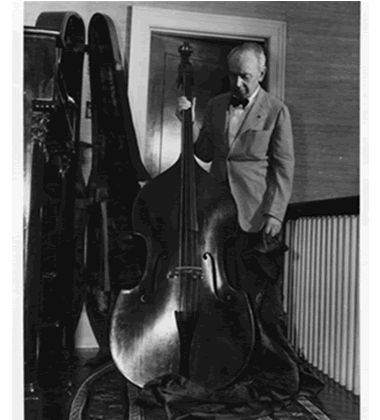
The Karr-Koussevitzky Bass tours the country in two-year residences at ISB partner bass shops. Members of the ISB in good standing may apply to borrow the Karr-Koussevitsky Bass for their own concerts and recording sessions. Click here for more information.
Gift from Gary Karr Makes ISB History
On the heels of transferring double basses owned by the Karr Foundation to ISB ownership, International Society of Bassists founder and world acclaimed soloist Gary Karr donated his fabled double bass to the Society. This is the same instrument once owned by Serge Koussevitzky and given to Gary by his widow, Olga. Gary remembers the meeting that changed his life:
"In 1962 my mentor, the great singer, Jennie Tourel, invited Olga Koussevitzky, the widow of Serge Koussevitzky, to attend my New York debut recital which took place in Town Hall. During the concert Mme. Koussevitzky saw the ghost of her husband embrace me, which she interpreted as a sign that I should be the recipient of his double bass. She presented it to me only days after the recital, and again in public when she made the gift official."
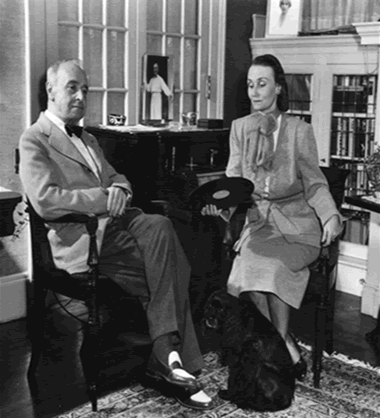
Gary continues regarding his decision to part with the bass that was his faithful companion for over forty years. "I am determined to honor the original intentions of Olga Koussevitzky to present the double bass as a gift, and it is my wish that the instrument leave my possession in the same manner. Therefore, it gives me enormous pleasure to present the bass to the International Society of Bassists so that this great instrument can be enjoyed by my double bass playing colleagues around the world. It is my strongest wish that it will be made available on display for this purpose and it is my hope that the double bass will be used in performance by the best talents on my instrument. With these goals in my mind, I can think of no better person or organization than the International Society of Bassists, in whose possession it will be given the treatment and attention it deserves."
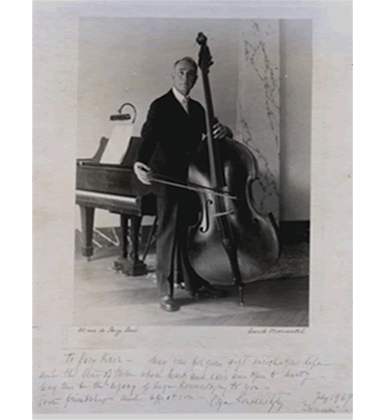
Initial news of Gary Karr's generosity swept through the worldwide bass community, and Gary's email inbox was soon filled to capacity with grateful thanks from his many friends and fans in the ISB. It is not possible to overestimate the "wow!" factor this magnificent gift has generated.
Albert Camus wrote, "Real generosity toward the future lies in giving all to the present." Double bassists around the world understand and embrace the debt they owe to Gary Karr, for his artistry, inspiration and nurturing spirit. His gifts to the ISB have helped insure the future of the organization he founded more than 35 years ago, but first and foremost, his legacy is rooted in the oft-repeated story that begins: "When I heard Gary Karr, I knew what I wanted to do with the rest of my life."
The Karr-Koussevitzky Double Bass
By Steven Reiley
In 2004, world renowned bassists Gary Karr, the founding father of the ISB, made a very special gift by donating his prized double bass to the ISB. Perhaps the best known bass in existence, Gary's supreme act of generosity brings prestige to the organization he founded, and also makes available to young bassists (the potential Gary Karrs of the future) an opportunity to see and perform on one of the great instruments in the world.
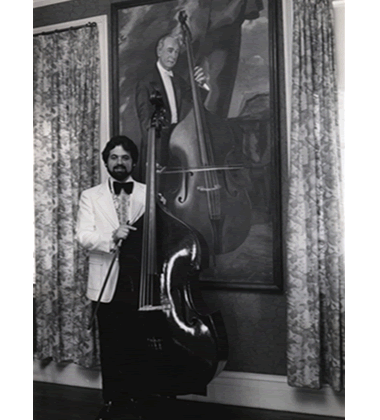
With this gift, Gary has presented the ISB an instrument of extreme value. It is noteworthy for its direct link to the famed Serge Koussevitsky and also to the members of numerous audiences around the world, who have been blessed to hear the great Gary Karr interpret the vast solo and chamber music repertoire that he has helped develop for the double bass. This is the bass upon which Gary built his career, playing many premiere performances and making recordings that have inspired bassists of all ages for decades.
To help document the origins and pedigree of the instrument, a panel of three internationally recognized experts, dealers and appraisers graciously donated their time and expertise: David Gage of New York City, Don Robertson of Albuquerque, NM and Steven Reiley of Grand Rapids, MI. On the ISB's behalf, Dustin Williams of Nashville, TN assisted.
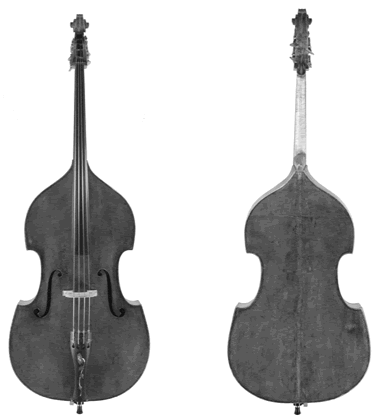
After studying the instrument over an intensive two-day period, the panel determined the gamba-shaped instrument is probably of French origin, c.1800. The following is a description of the bass.
The top is made from two pieces of spruce of narrow growth in the center moving to medium width growth in the flanks. The lower bouts have wings added from similar spruce. The back is made from two pieces of maple marked with a faint narrow figure ascending from the center joint. The ribs of the lower and middle bouts are of maple with a more defined figure and the upper bouts are similar to that of the back.
Throughout the course of studying the instrument, the panel discovered the top, lower ribs and "C" bout ribs exhibit similar varnish and aging of the wood. Original three-piece purfling exists in the center bouts of the top and slight movement outward in the upper and lower corners. From the corners upward and lower corners downward were new four-piece purfling, indicating that the upper and lower bouts have been modified, in order to develop the lovely and distinctive sloped-shoulder, solo shape that now helps define this fine instrument. Since the original shape has been altered (by reduction in the upper and lower bouts), the panel determined a newer back had been made to accommodate the redesigned shape. This work appears French, dating to the mid 1800s. The four-piece purfling used in the reduction of the top was present throughout the entire back, including the "C" bout area.
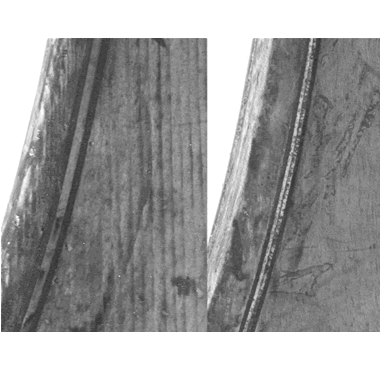

In the process of reducing the instrument in size, a new end block and new neck block were installed. The lower ribs (original to the bass) were shortened at the endpin and new ribs were made for the upper bouts out of similar maple to that of the back. The neck and scroll are additions to the instrument, which Gary Karr himself commissioned. These are beautiful workmanship, and worthy of such a fine instrument. The varnish is a deep reddish orange on the top, lower ribs and "C" bout ribs and a slightly more golden orange color on the upper ribs and back.
After the examination by the ISB panel was complete, the instrument was shown to Dr. Henri D. Grissino-Mayer of Knoxville, TN. Dr. Mayer is a noted dendrochronologist in the Department of Geography at the University of Tennessee in Knoxville, who also graciously donated his time to analyze the Karr-Koussevitzky bass. He studied the growth rings in the spruce used to make the top of the bass, and his study of the age and period of the historical growth of the tree coincided with the findings of the panel.
I personally want to thank Gary Karr for this tremendous gift to the ISB, as well as the other members of the panel of experts who generously donated their time and travel to such a worthy and historic effort.
Measurements for the Karr-Koussevitsky double bass:
| Body Length: | 104.7 cm |
| Upper Bout: | 48.5 cm |
| Center Bout: | 33.5 cm |
| Lower Bout: | 62.8 cm |
| String Length: | 105.5 cm (or 41.5 inches) |
